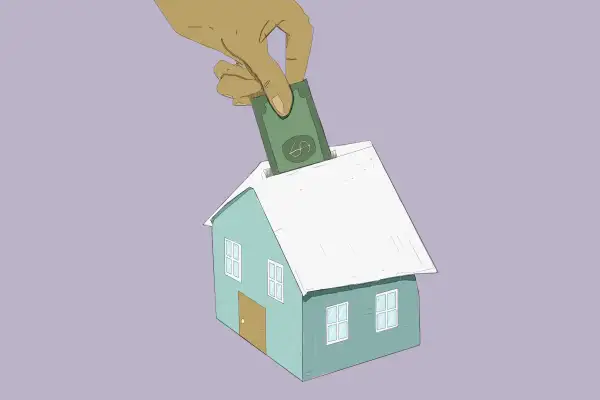What Homeowners Need to Know About Refinancing a Mortgage in 2022

Thanks to record-low interest rates, the past two years have been a mortgage-refinance bonanza. With rates already rising — and experts forecasting continued increases — refinancing may seem less appealing now.
While it’s true that 2022 is unlikely to offer the same level of opportunity as 2020 and 2021, this year will still be a good time to refinance for millions of homeowners. Record levels of homeowner equity mean cash-out refinances are also on the table for many people. Meanwhile, with rates still low historically speaking, it will generally still pay to convert an older adjustable-rate mortgage to a fixed-rate loan.
Regardless of the type of refinance, you need to make sure the terms of the new loan fit your needs.
“If you shop carefully and you are a well-qualified borrower there will always be a good opportunity for you to refinance,” says Melissa Cohn, regional vice president of William Raveis Mortgage.
As the year begins, pay special attention to the following three areas to prepare for a successful refinance.
Mortgage rates are likely to rise
So far this year, rates have been trending higher. Current mortgage rates hit 3.22% in early January, the highest level since May 2020.
Why are rates rising? Supply chain shortages, high consumer demand for goods and labor shortages have pushed inflation to the highest level in decades. This has led the Federal Reserve to start making changes to the easy monetary policy it put in place at the start of the pandemic.
Following the Federal Open Market Committee meeting in December, policymakers from the Fed announced intentions to cut back on Treasury and mortgage-backed security purchases faster than previously thought and also to begin increasing the federal funds rate as soon as this spring. Although the Fed does not set mortgage rates, these changes will increase costs for mortgage lenders and those costs will be passed on to borrowers.
This is a big part of why experts widely agree that mortgage rates will rise more in 2022, ending the year at anywhere between 3.4% and 3.7%.
Tip
In general, refinancing tends to payoff if you can lower your interest rate by at least 0.75 percentage points. With increasing interest rates, it’s more important than ever to shop around with different lenders to find the best rate.
Borrowers who get one additional rate quote can save an average of $1,500 over the life of the mortgage, according to Freddie Mac. Those average savings increase to $3,000 with five additional quotes.
Consider a rate lock once you find a rate that you’re comfortable with. This guarantees your rate won’t change before your loan is closed. You can also consider a rate lock float down, which will allow you to capture a lower rate if rates fall during your lock period. However, this option can cost between 0.5% to 1% of the loan amount depending on your lender and the length of the lock period.
Your credit score will still be key
Regardless of market conditions, your credit score is an important factor in determining what interest rate lenders will offer. Borrowers with higher scores qualify for lower rates. The pandemic caused a lot of hiccups in people's finances, says Cohn, so you need to know where you stand. While the average credit score increased to 716 in April 2021 — eight points higher year-over-year — not everyone saw an improvement.
“Taking the time to know your credit, seeing what you can do to fix your credit and making sure that you put your best foot forward in terms of a mortgage application is super important,” says Cohn.
The minimum credit score required to refinance will be set by your lender and can also be influenced by the type of loan you’re applying for. The typical minimum score for a conventional refinance, for instance, is 620. On the other hand, loans guaranteed by the Federal Housing Administration can be obtained with a score as low as 580. Typically, you need a score of 740 or above to qualify for the best rates.
Tip
If your score is below 740 — and especially if it has gone down since you took out your current loan — think about ways to improve your credit before applying.
Request a copy of your credit report from each of the credit bureaus, look for mistakes that may be pulling your score lower and have them removed. You would usually be able to access one free report from each reporting agency per year, but pandemic rules mean you can request one free copy per week until April.
Pay down debt if possible and don’t open new credit accounts. Credit agencies can also access your bank account (with your permission) and consider additional information like a history of on-time cell phone, utility or rent payments to your profile, which can sometimes boost your score as well.
Cash-out refinance demand could jump
While surging home prices have been a boon for sellers, homeowners who decided to stay put can also reap the benefits.
Home equity reached a record high of $9.4 trillion during the third quarter of 2021 — or about $178,000 in tappable equity per homeowner, according to real estate data firm Black Knight. As a result, cash-out refinances were 36% higher year-over-year in November and Black Knight expects that trend to continue.
“A lot of people want to refinance to sort of try to take some of the equity that they need during the pandemic,’’ says Cohn.
Tip
A cash-out refinance is a new loan taken out for an amount larger than your current mortgage. The bulk of the new loan goes towards paying off your previous mortgage with the remaining balance paid directly to you. You can use the proceeds of a cash-out refi for just about any purpose, including paying down higher-interest debt or making home repairs. Keep in mind that lenders often require you maintain at least 20% equity in your home to qualify for a cash-out refi. If you are happy with your current mortgage rate, you can also consider a home equity loan or home equity line of credit.
One more tip: Make sure refinancing makes financial sense
Remember, refinance closing costs can amount to between 2% and 6% of the loan amount and should be top of mind when considering a refi.
Use a mortgage refinance calculator to determine what your monthly payments could be with your new interest rate and loan term. Compare different rates and types of loans, such as fixed versus adjustable-rate mortgages. Sometimes changing the length of the loan can be better than changing the interest rate.
Once you have a sense of what your new monthly payment will be, calculate your break-even point. Divide your closing costs by the amount of money you’ll save on your monthly payments. The result will be the number of months it will take to recover your refi costs. The faster you recover the costs, the more benefit you’ll get from a refi.
More from Money:
Want to Refinance Your Mortgage? Do These 7 Things Now
The Pros and Cons of Switching Lenders When You Refinance Your Mortgage
6 Instances Where Refinancing Your Mortgage Could Actually Cost You Money
